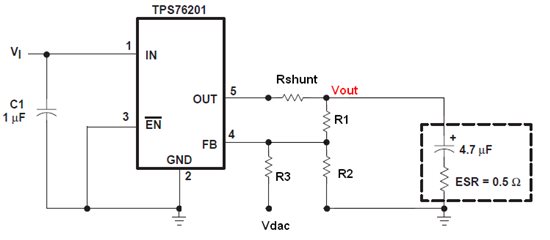Hi guys,
I'm designing a circuit for power profiling of MSP430. I want to measure the voltage drop across a shunt in the supply line. For the voltage regulation, I will use the TPS76201. In the data sheet, page 8/15, the equation to calculate R1 and R2 out of vref and Vout is given.
In my case, I have a shunt resistor between the output of the LDO and the point, which voltage I want to regulate (Vout)
Vdac is the output voltage of a DAC, based on which the supply voltage Vout is set. It goes from 0V ... 2,5V.
I want to setup Vout from 0.9V ... 3,6V
How can I choose R1, R2 and R3?
Thanks

